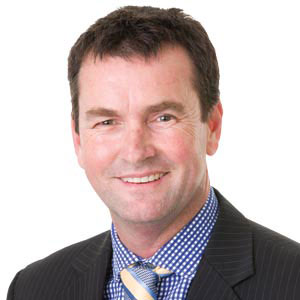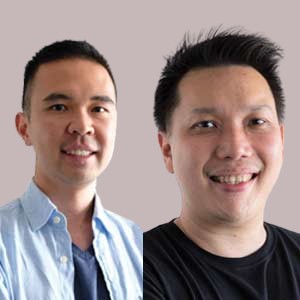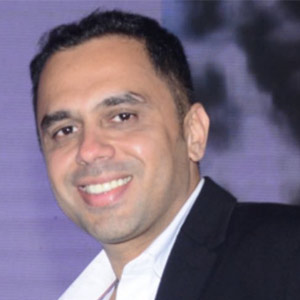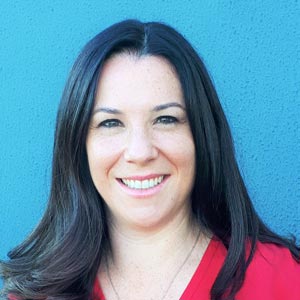THANK YOU FOR SUBSCRIBING
Editor's Pick (1 - 4 of 8)

Gary Peel, CIO, SYNERGY (ASX:IS3)
We have Architecture (future direction), Customer (customer facing systems as such our CRM and Web, Core Systems (internal ERP systems such as finance, logistics and plant maintenance), and our Operations area who manage day-to-day infrastructure, applications and production support.
Rounding out the teams is our newly-created Analytics family focused almost exclusively on information management, reporting, and advanced predictive analytics. A dedicated team highlights just how important the analytics capability is to our business. But it doesn’t stop there, and our Analytics family is unusual in its structure and reporting lines and as a result has become a poster child for new ways of working.
We saw a need for an analytics capability in our HR team and since the ICT analytics team was up and running we increased their scope and set the team to work across both business units. They are led by one manager who receives support and direction from myself and another senior executive. It really is a true ‘shared service’ and means our ICT people get exposure to the coal face of day-to-day operational requirements.
We’ve also adopted agile methodologies in recent years and tried to shake up the traditional ‘hierarchy structure’ of our organisation. This includes the blurring of reporting lines and not getting tied up in ‘who reports to who’. This has meant our teams can get to the heart of the business much quicker. I think this model has a lot of potential to be used elsewhere in the business.
Predictive analytics, or trend analysis based on past events is nothing new. The Bureau of Meteorology does it every day, but for an organisation like Synergy, predictive analytics has the potential to realise significant cost savings on multimillion-dollar tasks like generation asset maintenance. Moreover, we can also use predictive analytics to enhance safety – which is something our executive places as the number one priority above anything else.
Safety analytics is one of the areas where I can see substantial value and while we’ve made progress recently we’ve only scratched the surface. In the past we’d rely almost solely on anecdotal evidence, often from highly experienced employees, but there was never anything to back it up, never any hard evidence. This year we have commissioned work on safety analytics and it is giving us valuable information such as revealing the factors that may contribute to an increased chance of an incident. What was once ‘watercooler talk’ and mostly anecdotal is now backed by evidence. Imagine if this data saves us just one lost time accident or an injury to an employee. That’s massive.
One question I’m asked a lot is can we have too much data? Will it get to the point of simply having too much data for a human to use? Probably yes. We are only human and there are only five days in the working week. So, we will need to get smarter as the data volumes increase. How the data is presented and summarised will be important, but what’s more critical is maintaining its quality.
In fact, data quality is really where the buck stops. One of the biggest challenges I face is getting people to believe the data presented to them, because for years they didn’t trust it. Many users would fall back on a spreadsheet they had created themselves with various filters or other data sources merged in, simply because they didn’t believe the data our reporting tools presented to them. This has taken a considerable mindset change to overcome and I don’t think we are all the way there yet.
So, data is the new oil and with the right type of data and analysis at your fingertips it allows all our leaders to make the best and most well-informed decisions.
In a tough marketplace that’s not just oil - that’s gold.
Weekly Brief
I agree We use cookies on this website to enhance your user experience. By clicking any link on this page you are giving your consent for us to set cookies. More info
Read Also
Artificial Intelligence - Myths And Truths
Geraldo Pereira Junior, Chief Information Officer, Ypê
Sustainable Future through Innovative Technology Solutions
Faisal Parvez, Director, BT Business CIO
The Future Relies on Augmented AI
Laurent Fresnel, CIO, The Star Entertainment Group
Digitalization with the use of digital technologies/Improving business through digital technologies
Wilbertus Darmadi, CIO, Toyota Astra Motor
How Marco's Pizza Leaned On Technology To Succeed Amid The Pandemic By Quickly Pivoting To Contact-Free Delivery And Curbside Carryout
Rick Stanbridge, VP & Chief Information Officer, Marco’s Pizza
Bunnings Diy Digital Transformation
Leah Balter, Chief Information Officer, Bunnings
For a Smarter City: Trust the Data, Ignore the Hype
Brad Dunkle, Deputy CIO, City of Charlotte
Smart Community Innovation for the Post Pandemic
Harry Meier, Deputy Cio for Innovation, Department of Innovation and Technology, City of Mesa






















